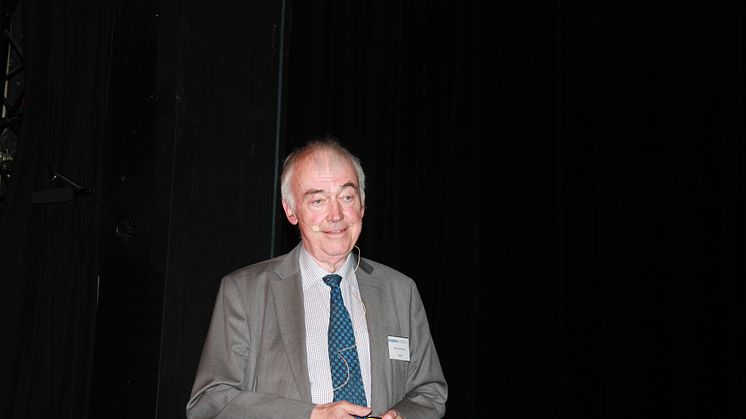
Blogginlägg -
Bert-Inge Hogsved: 25 years as an IT-entrepreneur in the bus industry, challenges past and present
"One of the best ways to encourage more use of public transport is to provide better travel information, both during and after their journey.”
This is how Bert-Inge Hogsved started his speech at the 2015 Public Transport Day. He made the same statement in 1992 on the Västnytt news programme, and it remains as relevant today as back then. While the company's ambition has not changed, technological advances over the years have opened up new methods and possibilities for communicating information to passengers.
In the late 1980s, Ericsson, Telia and Hogia collaborated to create a mobile data communication system. Telia provided a mobile data network with total coverage, Ericsson provided the technology and Hogia provided the applications. With the advent of GPS technology in the early 1990s, Hogia supplied local public transport in Stenungsund with GPS systems that enabled the transport management centre to track speed, vehicle location and delays. Position data was transmitted between the buses and the transport management centre, but only at certain times of the day when the satellites where in the right position. The technology was slow and data transmission was expensive, so only a limited amount of data could be exchanged. Moreover, the installations in the vehicles were complex. By 1994, the technology had advanced and over 500 buses and 25 transport management centres were now connected by Hogia's public transport systems.
Today mobile data communication is cheap and fast, which opens up completely new possibilities. Passengers, transport managers and bus drivers can get reliable information in real time, while less equipment and fewer on-board systems are needed on-board the vehicles. Hogia TransitCloud was launched in 2014. It sends positioning data from vehicles every second, making forecasts more reliable. This system is currently installed in 500 vehicles, and by December, 1,500 vehicles will be equipped to transmit second-by-second position data.
Bert-Inge concludes by staying that although Hogia has been quick to embrace new technologies over the years, the most important keys to the company's success have been its strong industrial focus and continuous standardisation work. He emphasises that continued work on standardisation is crucial to the future of public transport. There are large amounts of data to be exchanged and analysed and many stakeholders and systems to coordinate. It is increasingly important to offer passengers a complete transport concept. Hogia is actively involved in developing standards, partly with the aim of increasing the industry's possibilities of offering passengers seamless transport between counties, countries and transport modes.
Hogia has over 25 years' experience of developing and supplying software and IT systems to the transport sector, and is the only system supplier in Europe to offer integrated solutions for ferries, port terminals, road transport and public transport.
Hogia's PubTrans central integrator:
-helps 500 transport managers do their job every day
-performs 1 million traffic forecasts per day
-provides 25,000 drivers with instructions every day
-keeps track of 6,000 vehicles' position at any given moment

